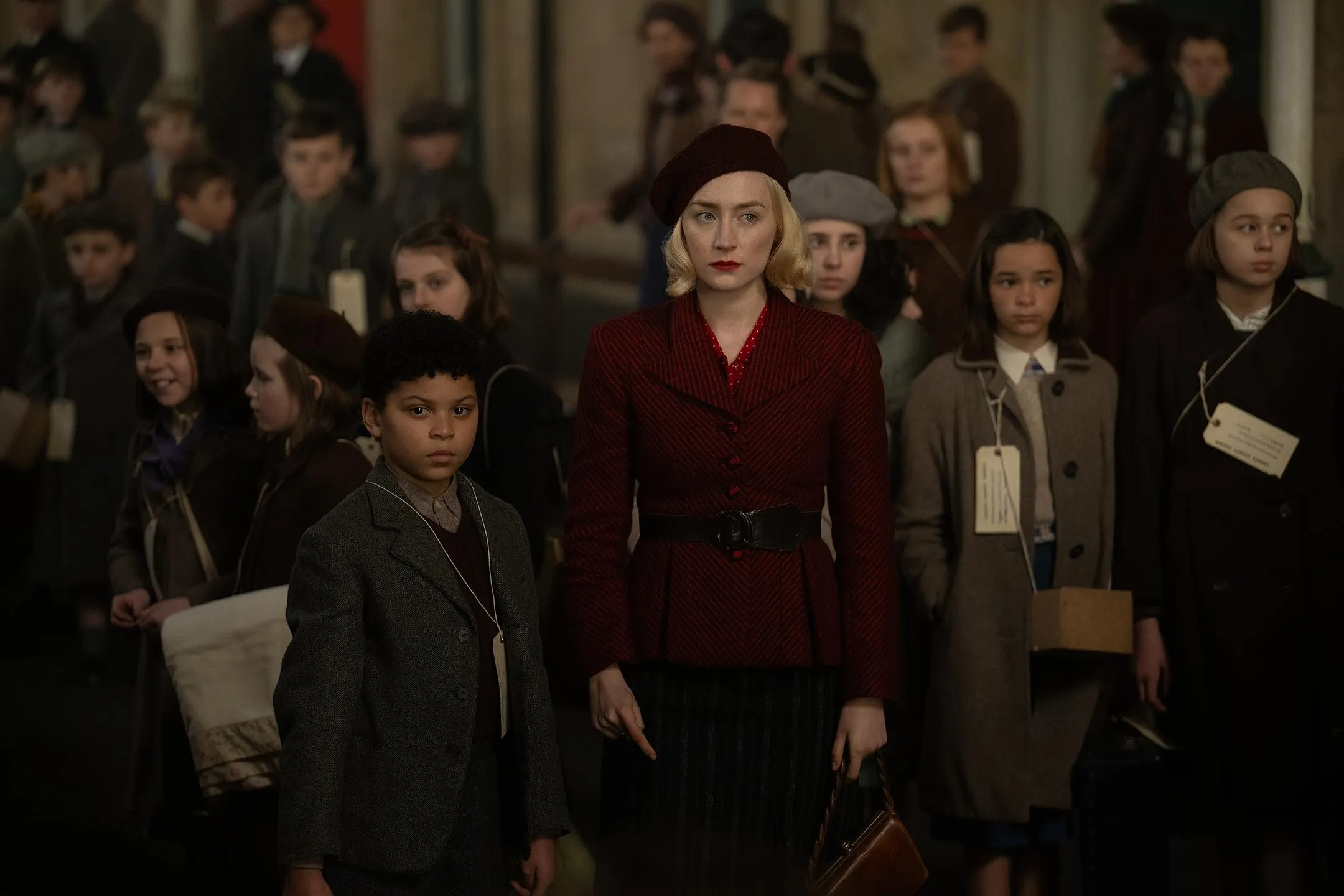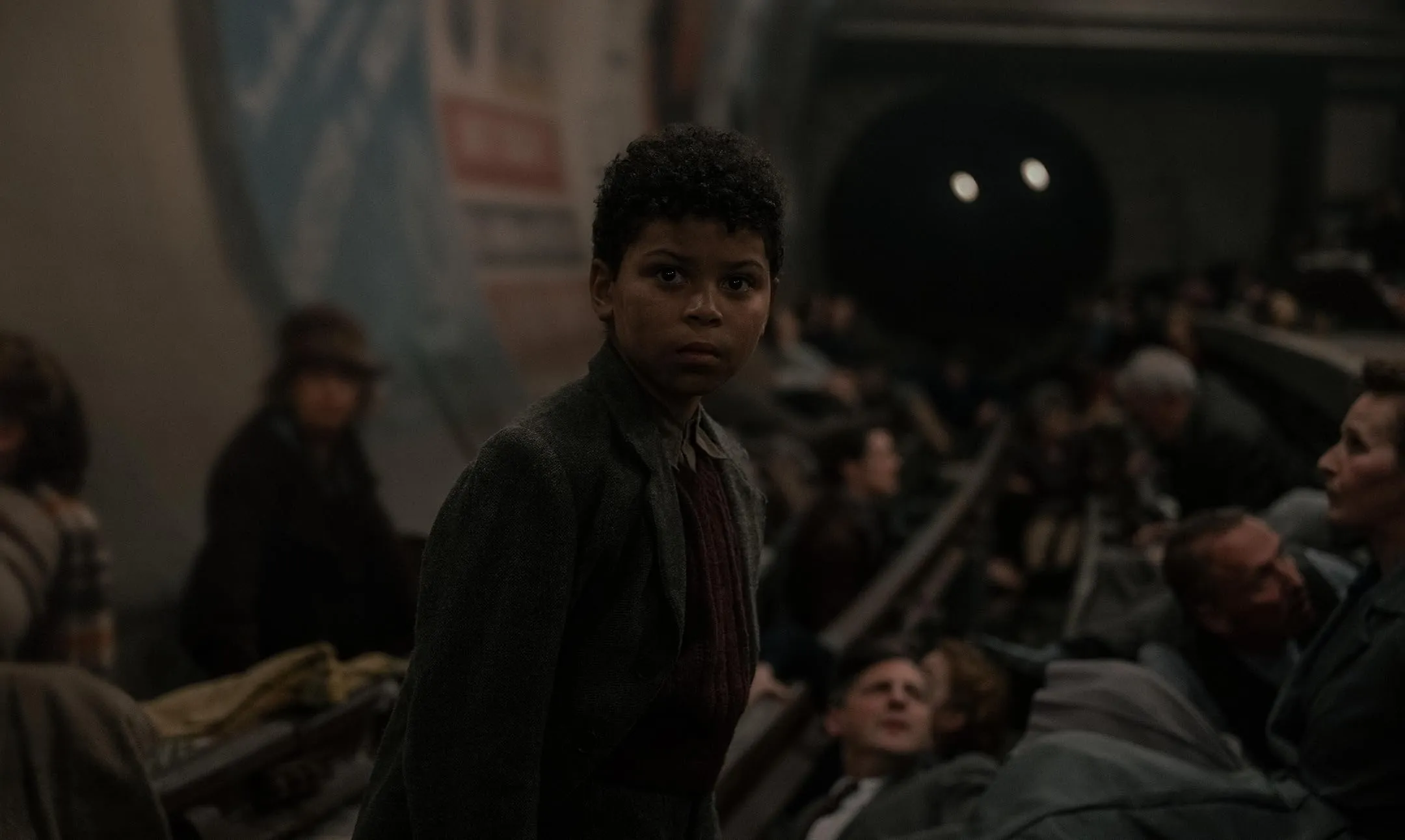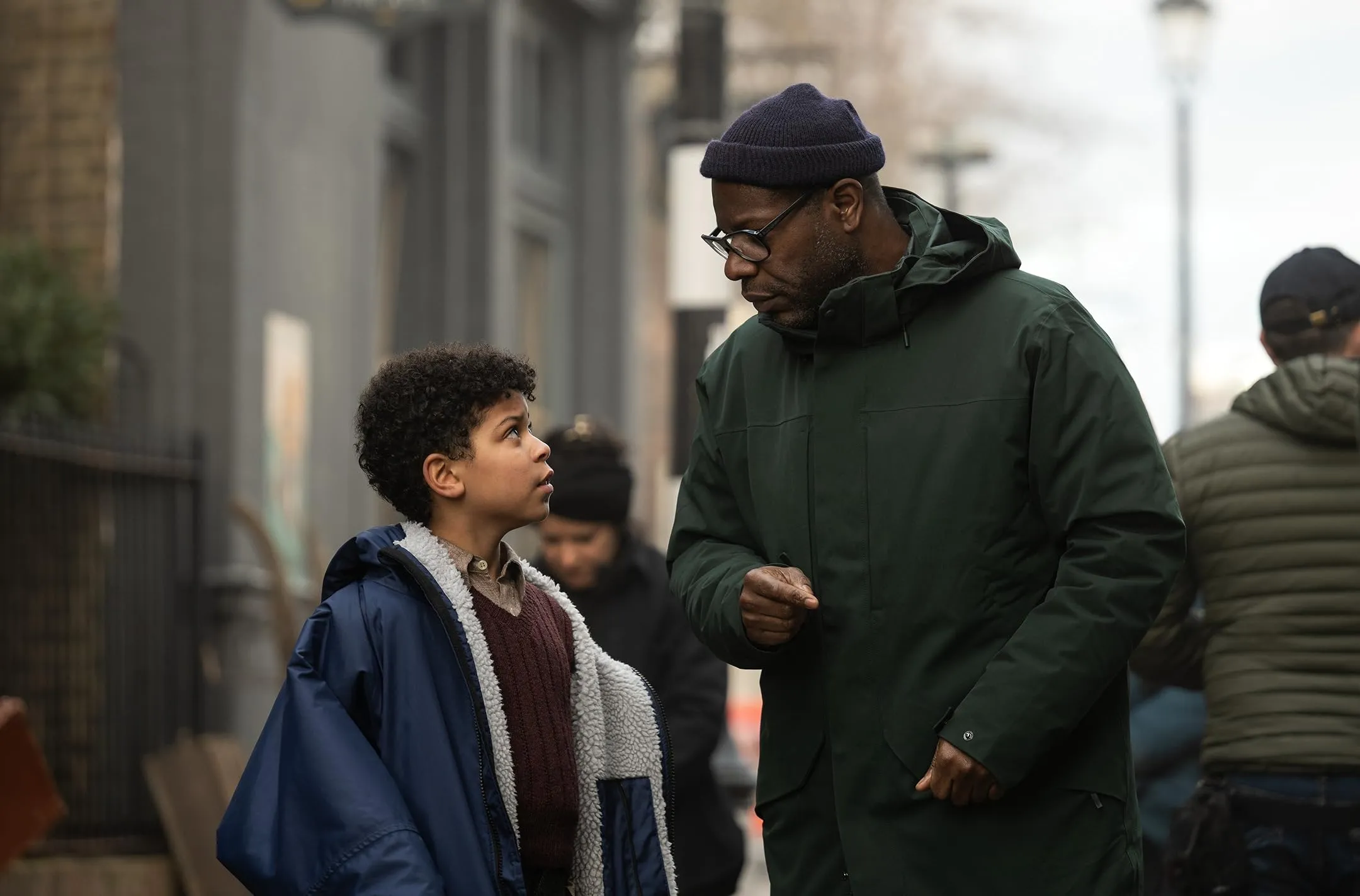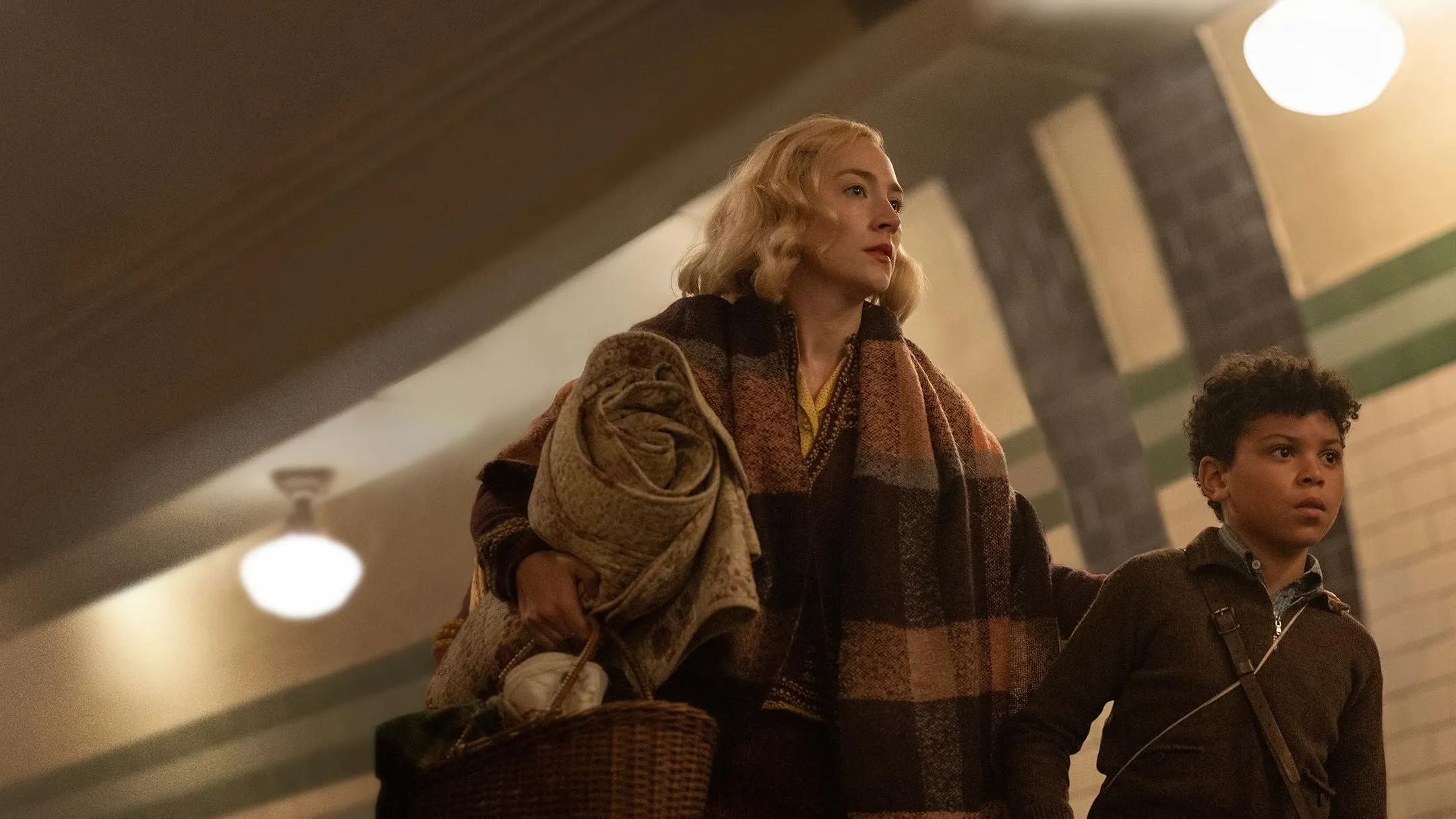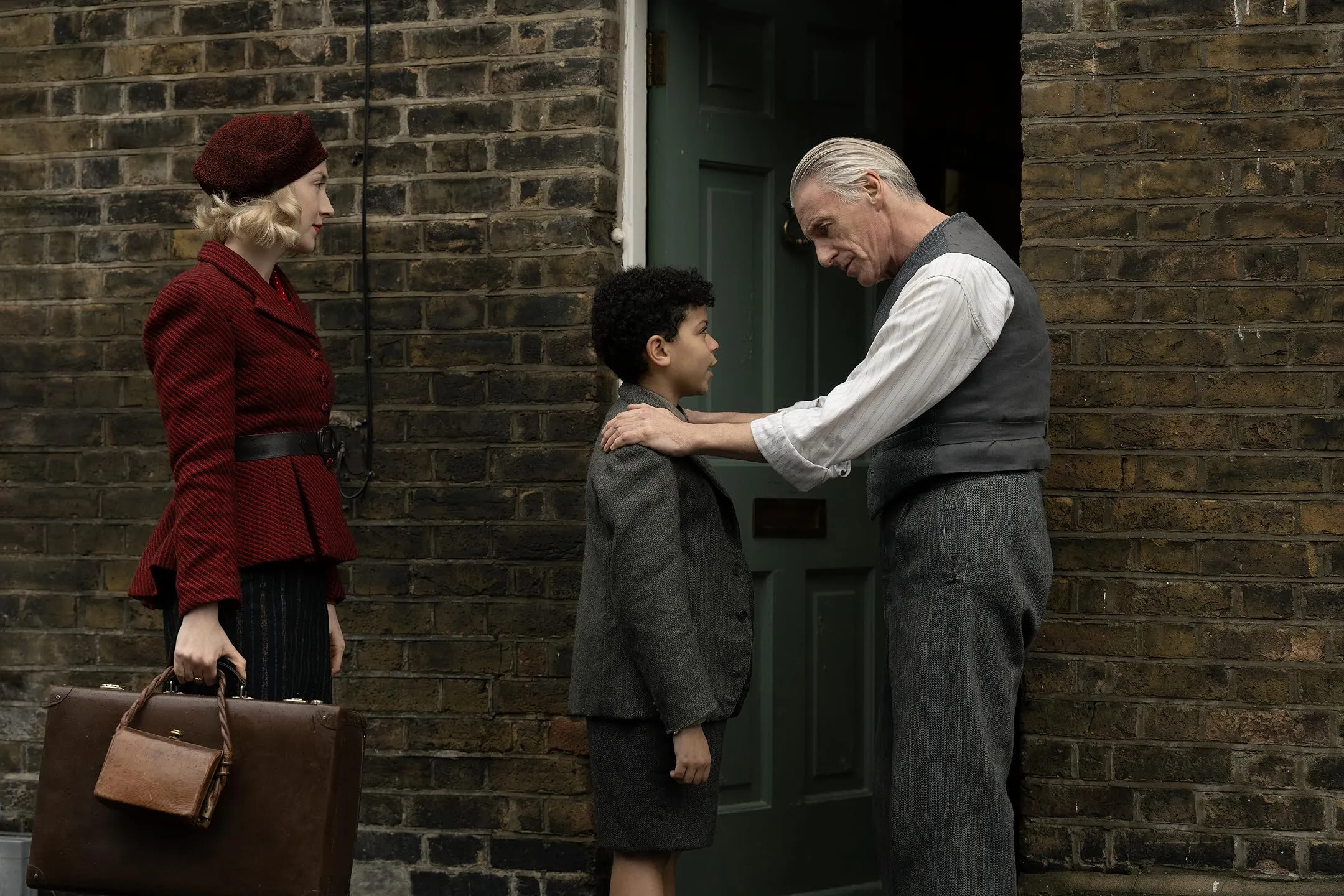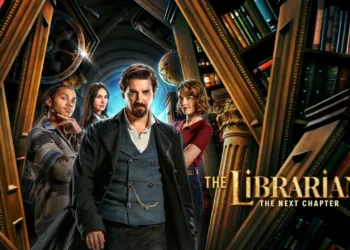Visionary filmmaker Steve McQueen set out to tell a new story about World War II with his movie Blitz. Known for powerful films tackling crucial issues, like 12 Years a Slave, which shed light on the horrors of slavery, McQueen turned his gaze to London during the Blitz. It was a perilous time as Nazi Germany bombed the city night after night, yet the damage went beyond buildings—civil lives were forever changed.
Most war films focus on battles between soldiers, but few show what ordinary people endured on the home front. In Blitz, McQueen shines a spotlight on these untold stories through a young boy named George and his mother, Rita. It’s September 1940 when the bombing campaign known as the Blitz begins in earnest. George, who is of mixed race, lives with Rita and his grandfather in London’s East End. But the nightly air raids grow too dangerous, forcing Rita’s difficult decision to evacuate George to the countryside for his safety.
George has other ideas, though, and when a chance arises, he leaps from the train, beginning a journey back to his mother in the bombed capital. His odyssey through a city under fire reveals both the suffering of civilians and examples of humanity persevering in dark times. Meanwhile, Rita works in a ammunition factory and volunteers at a shelter, showing the resiliency of ordinary people keeping communities together despite the war raging over head.
With Blitz, McQueen aims to bring new perspectives to one of history’s most significant eras. Beyond showcasing untold heroism, he presents a portrait of a diverse London and examines how people of all backgrounds supported each other in the blitz’s darkest hours.
A Mother’s Love
This story focuses on a young boy named George and his mother, Rita. We meet them living in London’s East End in 1940, as World War II rages across Europe. The nine-year-old George lives with Rita and his grandfather, finding comfort in their close family bond.
However, the constant Luftwaffe bombings grow too dangerous. Faced with the difficult choice, Rita decides George must be evacuated to safety in the countryside. He furiously protests, lashing out as his train departs. But his lone journey has only begun—once away, George jumps from the moving train, determined to return to the city and Rita.
And so the adventure begins. George’s travels back to London expose both the suffering caused by the aerial assaults and moments where humanity’s spirit prevails. Along the way, he encounters others who offer help, like a kindly air raid warden named Ife. But dangers also lurk, and a gang of thieves pressures George into horrific acts.
Meanwhile, Rita volunteers at a shelter to help her community. Yet nothing can replace George’s absence. Learning he never arrived as planned, she searches desperately for her missing son. Their profound connection, though strained, drives Rita’s resilience through endless nightly bombing raids.
The film hinges on exploring their bond across George’s odyssey. Despite facing racism as a mixed-race child, he finds compassion from others. Rita likewise perseveres through tragedy and personal setbacks, unwavering in her maternal love. Their relationship resembles the strength and hope many London families discovered to survive those shadowed times. Through parallel arcs of fear, loyalty, and triumph over adversity, their touching story becomes the film’s emotional anchor.
Bringing the Blitz to Life
One thing is clear: Steve McQueen spared no effort in bringing the world of Blitz to vivid life. The film is a technical marvel, pulling you deep into the harrowing reality of London during the World War II bombings.
McQueen filled the screen with painstaking period details. Stepping onto the cobblestone streets feels like a voyage to 1940s London. Shops and buildings immerse you in the era. Yet ruins and rubble hint at looming danger.
It’s this contrast that makes the explosive sequences so striking. McQueen places you in the inferno. The flames immerse your view like the searing heat. You hear explosions in your bones through Hans Zimmer’s pounding score. During one scene, I could feel the person beside me clutching their seat in suspense.
Technical mastery like this helps make chaos feel real. As firefighters battle an engulfed building, the camera captures their frantic struggle. A cascade of a massive firehose mirrors the war’s sudden terrors.
Costumes and production design enhance the believability. From factory workers’ utilitarian uniforms to posh patrons’ lavishwear, outfits immerse you in each diverse world. Even the grimy thieves seem plucked from the era.
Visually, McQueen shakes up conventional perspectives. Aerial shots survey the city from above like surveillance, emphasizing humanity’s vulnerability. Inside shelters, his camera peers through the shadows at souls holding fast against darkness.
These techniques place you in the action seamlessly. The director understands viewers don’t simply want to observe history; we yearn to experience it ourselves. In Blitz, McQueen transcends screens to make the wartime drama deeply felt. His astounding efforts ensure we feel the fear, loss, and resilience of Londoners who endured the Blitz.
Hope Among the Ruins
While many war films glorify soldiers, Blitz shines a light on ordinary civilians. McQueen focuses on how Londoners suffered under constant bombardment yet also came together in dark times.
The attacks were devastating. Entire neighborhoods were reduced to rubble and ashes. Death could arrive randomly, wherever the bombs fell. McQueen’s unflinching realism makes the destruction deeply moving.
However, loss was not this story’s whole truth. McQueen shows communities binding their wounds with whatever threads remained. When the state failed refugees, average people lent shelter and support across divides.
Racism plagued society, yet some overcame prejudice. Ife, a Black Air Warden, fostered unity in crowded shelters. Despite facing harassment himself, he believed shared humanity was stronger.
Meanwhile, class and gender biases compelled many, like Rita, to keep families fed. Though vulnerable, women played indispensable roles beyond home life. Their efforts kept cities functioning under fire.
Most touching is how tiny acts of hope persisted even amid trauma. Music, humor, and friendship reminded survivors of life’s simpler joys, proof an indestructible spirit endured. As rubble was cleared, resilience would rebuild from these treasures.
Blitz tells an essential story for today. When catastrophes strike, community alone ensures our survival. By spotlighting unsung heroes, McQueen reminds us that united, even the darkest clouds hold promise of brighter skies. Most crucial moments in history belong not to any single face but to ordinary people standing shoulder to shoulder.
Breakout Talent Light Up the Screen
Blitz sees star-making turns from its leads, Elliott Heffernan and Saoirse Ronan. In his first major role, young Heffernan brings George to life with nuanced empathy beyond his years. Facing racism and war’s horrors with steady courage, George’s journey of self-discovery stays believable thanks to Heffernan’s natural gifts.
As George’s lifeline Rita, Saoirse Ronan ensures their relationship anchors the film. Her passionate yet vulnerable Rita embraces every emotion, from grief to joy. Even in fleeting moments, Ronan breathes fullness into her character. Her ability to craft complex souls makes Rita’s perseverance profoundly moving.
Supporting acts swell Blitz with rich texture. Benjamin Clementine brings a warmth and gravitas as Ife, becoming the kindly figure George desperately needs. His gentle spirit leaves an indelible impression, representing hope even in darkness.
Veteran thespians prove consistently compelling too. Paul Weller infuses gentle dignity into George’s grandfather. And Stephen Graham sinks visceral menace into the repulsive yet pitiable thief Albert in an unforgettably twisted turn.
Across the board, Steve McQueen’s direction draws raw sincerity from his cast. Fully embodying their roles in a war-torn London, each performance resonates with the truth of ordinary lives facing abnormal times. Whether in small scenes or large, their collective talent lifts Blitz to spellbinding emotional heights. Most of all, new discovery Heffernan announces himself a young talent blazing bright for years to come.
Blitz Primed for Awards Glory
Critics and audiences alike have embraced Blitz. The film has drawn rave reviews worldwide for its technical mastery and emotional depth. With exquisite production values, authentic characters, and phenomenal performances, Blitz has awards season written all over it.
Particularly in the UK, Blitz seems destined for theatrical acclaim. Brits will undoubtedly connect with its portrait of British wartime spirit. A run-up to potential nominations will showcase Blitz in its London birthplace.
Meanwhile, Blitz is an odds-on favorite for craft honors. Jacqueline Durran’s period costumes and the bombastic yet haunting score will find favor. Yorick Le Saux’s cinematography, blending grandeur with gritty verisimilitude, deserves every nod.
Especially after 12 Years a Slave’s Oscar glory, McQueen has awards clout. Returning to history at this scale, he exceeds high expectations. But the director may delight most in praise for Elliott Heffernan’s breakthrough turn. Among leads and supports, no one gives a performance with more nuance and empathy.
Of course, war dramas perennially prompt dialogue. Blitz ensures discussions highlighting marginalized stories and unsung heroes of the era. Its unflinching stares at racism and sacrifice make stirring talking points.
While imperfect, Blitz boasts ambition, artistry, and soul that larger prizes celebrate. After acclaim for Lovers Rock and Small Axe too, this season may reinforce McQueen among the world’s most vital filmmakers. For audiences and cinephiles alike, Blitz burnishes his unique vision.
A Story that Echoes Through the Ages
Blitz tells a story that, despite focusing on a specific period in history, feels deeply relevant today. McQueen crafts more than a war film—he creates a timeless portrait of humanity.
Through intimate glimpses into ordinary lives, we witness how Londoners found purpose, friendship, and light amid destruction. Their resilience in the film’s bleakest moments reminds us that community is our greatest strength.
McQueen proves again his gift for compelling, emotionally raw filmmaking. He forges empathetic bonds between viewer and characters we continue thinking of after the end. Most of all, he spotlights unsung heroes who gave hope through compassion.
Blitz stands as a powerful snapshot of our shared humanity. When faced with unimaginable darkness, ordinary people banded together, as people of all backgrounds continue doing in humanity’s darkest hours. Their perseverance is our shared inheritance.
As in the film’s closing message, we must welcome opportunity from the ashes of crisis. By standing with our neighbors in need and challenging prejudices that divide us, a brighter future can rise from the ruins of today. McQueen inspires looking to real lives of courage that prove darker times don’t last, and neither do societies that test the endurance of compassion.
The Review
Blitz
With Blitz, Steve McQueen crafts a cinematic achievement worthy of acclaim. His intimate portrait of London during the Blitz succeeds not just as a visceral war drama but as a profound tribute to ordinary acts of courage. Blitz emerges as a quietly optimistic film that challenges viewers to reflect on our shared capacity for hope, even in humanity's bleakest moments.
PROS
- Powerful, immersive visuals that transport viewers to 1940s London
- Compelling central performances from Elliott Heffernan and Saoirse Ronan
- Highlights important yet overlooked stories from the WWII home front
- Subtle but thoughtful examination of racism, community, and human resilience
- Excellent production values and attention to historical detail
CONS
- Predictable overall narrative structure and plot points
- Underuses promising supporting cast members at times
- Could have delved deeper into some thematic or character elements.









































